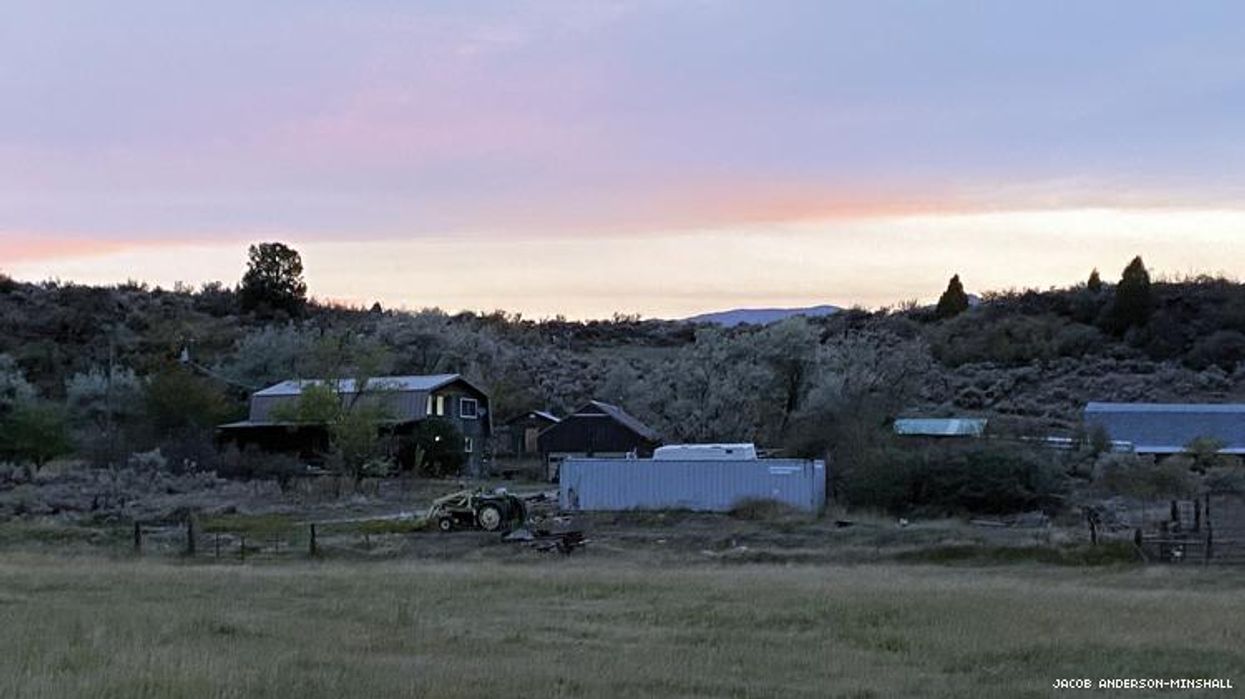Print Issue
Trans Editor Considers The Indigenous History in His Backyard

Opportunities to experience and preserve indigenous cultures are often closer than you might think.
May 11 2022 4:00 AM EST
By continuing to use our site, you agree to our Privacy Policy and Terms of Use.

Opportunities to experience and preserve indigenous cultures are often closer than you might think.
Native American history lives in my backyard. I’m not alone here: Indigenous people live across this continent, and their history is in all of America’s backyards. But, it’s often buried, misconstrued, or forgotten. Even in the West, like on this Idaho farm (pictured above), a lot of that history has been destroyed or erased.
Directly behind the house my dad built, on land historically home to Shoshone and Bannock tribes, is what used to be Indian Rocks State Park. The expansive lava field and sagebrush steppe is now administered by the federal Bureau of Land Management.
The relocated petroglyphs at BLM Indian Rocks Area
Many of the former park’s petroglyphs are no longer there. The freeway rest stop that once drew thousands of visitors to view them is gone, too. The park closed in 1983, and the boulders were relocated five miles away to protect them from carelessness and outright vandalism. Initially there was a visitor’s center in the new location, but it’s now gone, too. The federal government later named the BLM Indian Rocks Area a site of critical environmental concern, in part to protect the cultural resources of the tribes that still call this region home.
Native American culture continues to thrive nearby. The Fort Hall Reservation is about an hour away. Nolan Brown of the Shoshone-Bannock Tribes Cultural and Preservation Department recently collaborated with the Bureau of Land Management on two interpretive signs to provide historical context to the petroglyphs. Those new signs, posted where the boulders now rest, display the Indigenous history of Pihaguyu Nahuukwa Teviwa (the local Portneuf river region). “The rocks tell the story of our ancestors,” Brown told Idaho State Journal earlier this year.
This effort is a microcosm of a broader movement to protect and share Indigenous history and culture across the continent. Investment in Native American, Alaskan Native, and Native Hawaiian tourism is increasing dramatically in response to local and international interest. This burgeoning segment of the travel industry is one that also demands specificity, because each of the 574 federally recognized tribes (or Indian nations) has its own culture situated in, and derived from, very specific lands.
What that means to today’s travelers is a cornucopia of destinations to visit and Native American cultural practices to experience.
Inviting you to get to know the Indigenous culture and history as you travel the world — and in your own backyard,
Jacob Anderson-Minshall
Editor in Chief